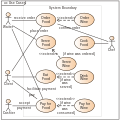This article has multiple issues. Please help improve it or discuss these issues on the talk page . (Learn how and when to remove these messages)
|
 | |
| Abbreviation | OMG |
|---|---|
| Formation | 1989 |
| Type | Nonprofit |
| Legal status | Consortium |
| Purpose | Standards development |
| Headquarters | 9C Medway Road, PMB 274 Milford, Massachusetts |
Official language | English |
| Website | www |
The Object Management Group (OMG) is a computer industry Standards Development Organization (SDO), or Voluntary Consensus Standards Body (VCSB). OMG develops enterprise integration and modeling standards for a range of technologies.
